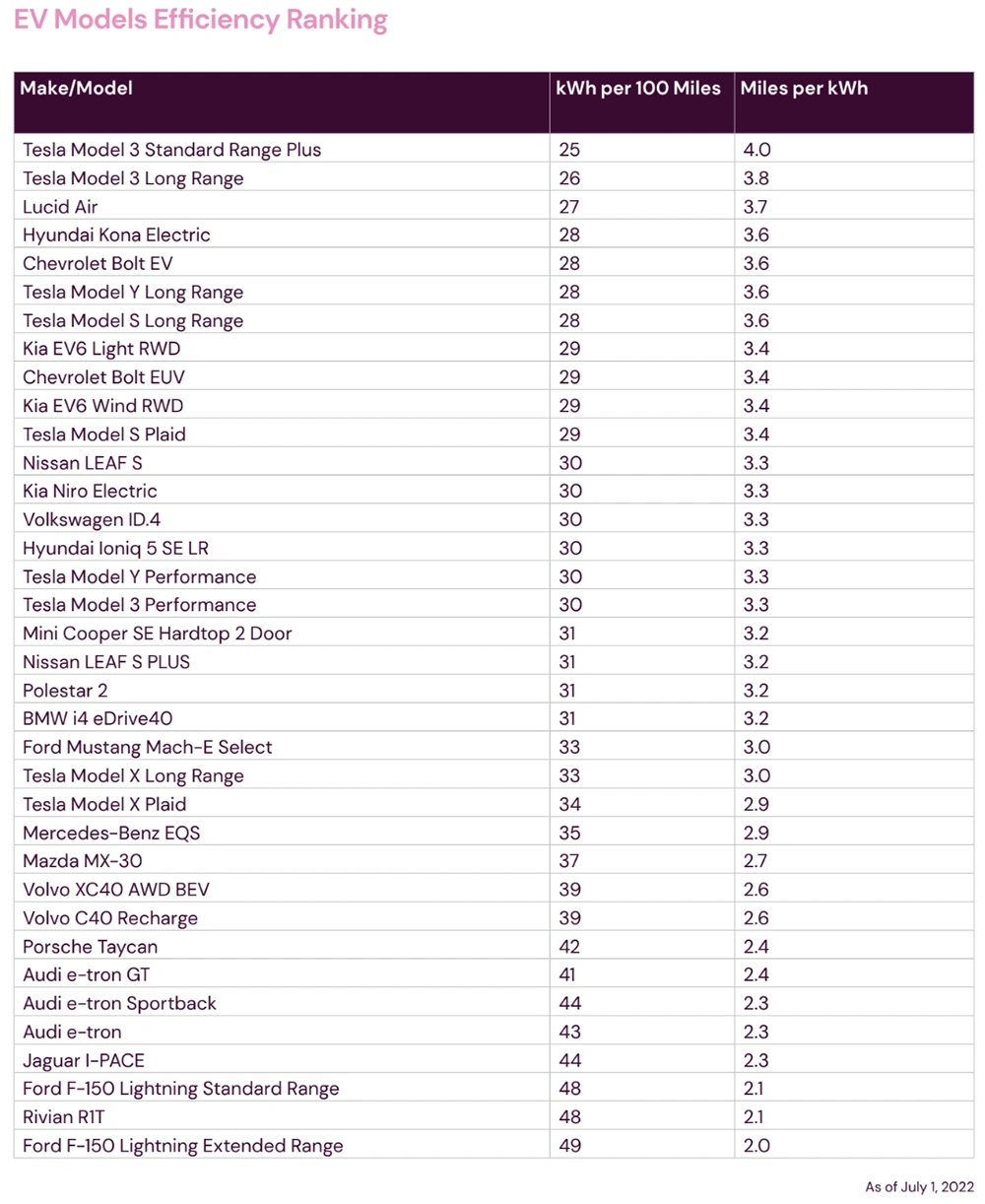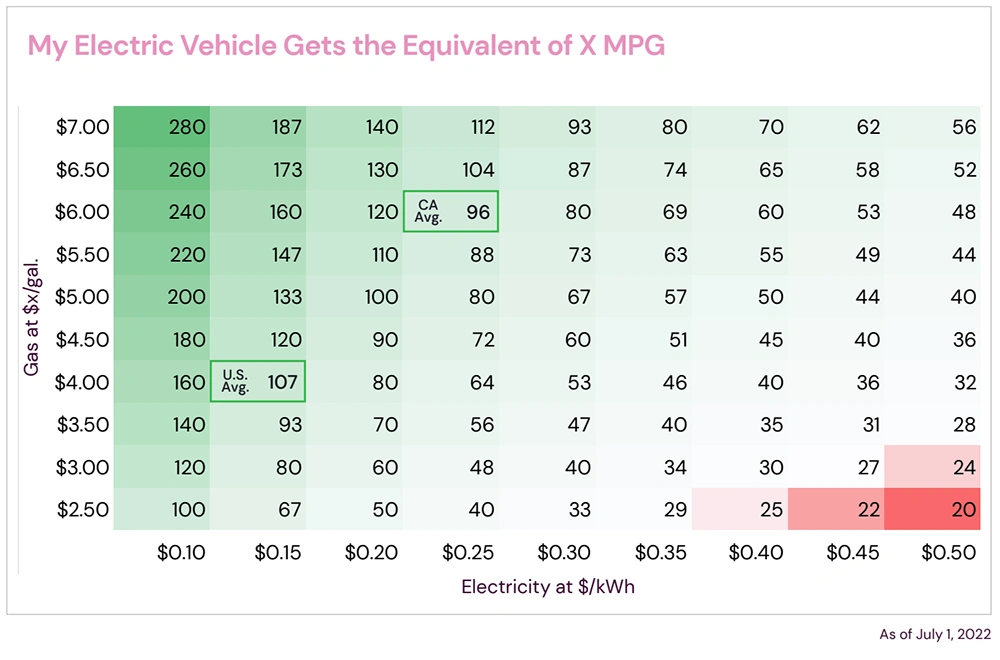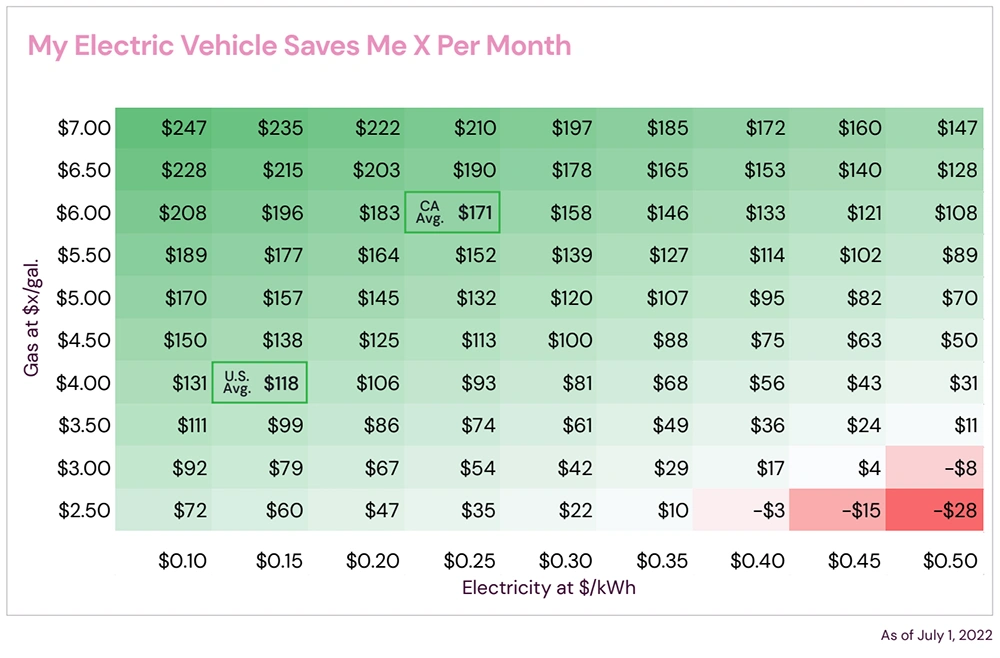Electric Vehicle vs. Internal Combustion Engine Payback
December 6, 2022
Electric Vehicle vs. Internal Combustion Engine Payback
For decades, consumers have become accustomed to measuring a vehicle’s efficiency and cost of operation in terms of how many miles per gallon the vehicle achieves. In order to provide a similar measure for alternative fuel vehicles, beginning with model year 2012, the EPA introduced the miles per gallon of gasoline equivalent (MPGe) as a way to compare the amount of energy consumed by vehicles using alternative fuels to those of gas-powered engines. MPGe is calculated as the number of miles an EV can go on 33.7 kWh of electricity, as that is apparently the amount of energy contained in a gallon of gasoline. While this provides a benchmark of sorts, it is not particularly useful in determining just how much an EV costs to run compared with an ICE vehicle.
These graphs map, on the basis of cost, the average MPG that an ICE vehicle would need to achieve in order to match the per-mile running costs of an EV that gets 4 miles per kWh; this is approximately the same measure as a Tesla Model 3 Standard Range Plus, and is in the ballpark of a majority of EVs. Note that the color coding is based on comparison to the average MPG of a vehicle in the U.S. (25.7 MPG). EV vs. ICE Payback
In order to fully understand what an EV, such as a Tesla Model 3, costs to own versus an ICE vehicle, using the gasoline cost and electricity cost range, it is also useful to draw a comparison in terms of monthly operating costs with the assumption of 12,000 miles a year.
With current California and average U.S. electricity and fuel costs, an EV gets the equivalent of about 126 MPG and saves $167 per month in California, or 98 MPG and saves $134 per month nationally.
In order to fully understand what an EV, such as a Tesla Model 3, costs to own versus an ICE vehicle, using the gasoline cost and electricity cost range, it is also useful to draw a comparison in terms of monthly operating costs with the assumption of 12,000 miles a year.
With current California and average U.S. electricity and fuel costs, an EV gets the equivalent of about 126 MPG and saves $167 per month in California, or 98 MPG and saves $134 per month nationally.
While the Tesla Model 3 Standard Range Plus gets 4 miles per kWh, not all EVs are quite as efficient. Instead of using MPGe for comparison, as we mentioned previously, the table at right lists both the amount of electricity used to travel 100 miles, as well as the number of miles achieved per kWh. Notably, with the exception of the Mazda MX-30, the least- efficient vehicles are primarily larger trucks, such as the Rivian R1T and Ford F-150 Lightning, and larger luxury cars and SUVs, such as the Mercedes-Benz EQS, Tesla Model X, and Audi e-tron. While most EV intenders are narrowly focused on EV electric range for obvious reasons (e.g., longer “refill” time versus a gasoline-powered vehicle), as EVs become a larger and larger part of the automotive marketplace, electric efficiency will become an equally important measure of their value.

•This article was excerpted from Autonomy’s Electric Vehicle Market Report, Issue 1. To download the full report for free, click here.
Jesse Toprak and Brandy Schaffels
Longtime auto industry analyst Jesse Toprak is now the chief analyst at Autonomy, the electric vehicle subscription platform from Scott Painter and Georg Bauer. His auto analyst roles included being the chief analyst at Cars.com, the vice president of market intelligence at TrueCar and the executive director of industry analysis at Edmunds. Toprak was most recently the chief executive officer of CarHub and the vice president of corporate strategy for Hertz. Brandy Schaffels brings the benefit of 30 years of experience reporting on the automotive industry. Brandy's career includes working as both freelance journalist and staff member of such household name brands as Car Craft, Motor Trend, AskPatty.com, and TrueCar.com. Brandy first burned rubber in a red 1976 Chevy Monza and will never forget her first true muscle car: a Root Beer Brown 1968 Mustang Coupe with a 289 cid small-block V-8. Today, you'll find Brandy behind the wheel of either her sunshine-yellow Fiesta or her sky-blue BMW Z4 convertible, depending on the weather.


